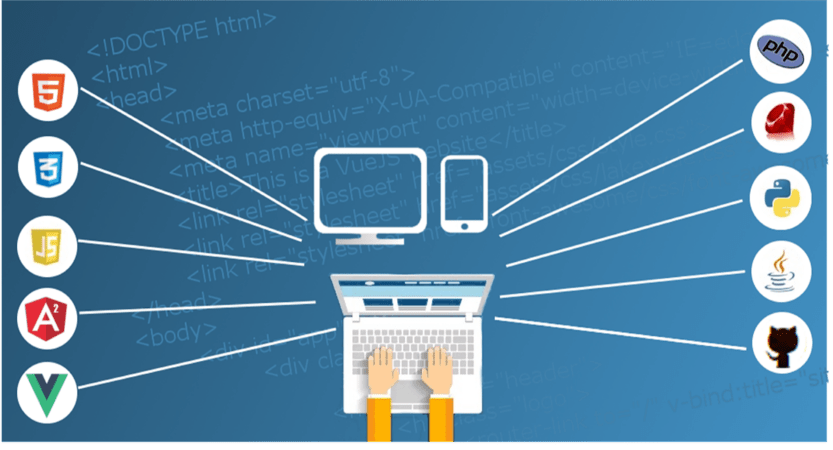Undoubtedly, in our daily lives we consume the internet in different ways. Could be for work, study, or simply looking at memes on Twitter (🙄), but the truth is that the internet is a fundamental part of people’s lives. But, have you ever wondered how all those pages, sites, applications that we use every day are made? Or better yet, who makes them? Welcome to Web Development.
Well, with this article I will try to solve some of those questions …

Programmer or Developer? What are they not the same? 🤔
In practice the difference is clear and can be separated into two levels:
The programmer takes care of the tasks associated with programming. He has defined his role in a web project. He is in charge of writing code, and doing it in the most correct way and following good practices (good practices? Don’t worry, this is a topic for another day).
In addition to programming, the developer is in charge of other tasks related to the application itself, and can cover any or all of the project phases, from product definition, testing, publication and maintenance. In addition to having at least basic knowledge of other related areas, say Database, Design, SEO (Search engine optimization); as well as a total control of the objective that the application has for the end customer.
With this clear, we then enter the world of the Internet, the world of the Web. Web development is possibly the largest area of development that exists when it comes to creating software, and why? Simple, because the internet is everywhere, on our mobiles, PCs, homes, even in everyday things like a fridge or a washing machine, yes, even there with the area of IoT (Internet of Things).
Web development roles

Programmers and web developers are divided into two well-defined profiles, Frontend and Backend; although there is a third group, the so-called FullStack which dominate both worlds, and are practically considered as gurus within this world. Let’s see a little the difference between each one …
Frontend in Web Development
The Frontend or client side, as it is also known, is the part of a site or application (whether web or not), which interacts directly with the client or user. Here the visual quality of the product is essential since it is needed ensure the best experience for the person using the application. To dedicate yourself to this area, you must know HTML and CSS, the layout languages that allow us to define the structure and styles of a web page, and also JavaScript, a programming language to define the logic of our application, receive requests from users and send them to the backend.
Backend in Web Development
Backend or server side, is the back, which is not visible to users, it is the data access layer of a software or any device, it also contains the logic of the application that handles said data. The Backend also accesses the server, which is a specialized application that understands the way in which the browser requests resources that users request, photos, videos, text, music, etc.
To dedicate yourself to this area there is a wide sea of possibilities, JavaScript, PHP, Python, Java, C #… and many others. Finally, we recommend the learning path that we consider most appropriate, so that you become a Web Developer. We believe that this would be a great option if you are starting from scratch, since with the same language you could work both in the Frontend and in the Backend(Feel free to investigate others, and thus discover which one you feel most comfortable with).
Recommended learning path:

It should be clarified that within each of these areas there are many more elements that should be known, but as you go into each one you will discover them.
Conclusions:
If you are interested in Web Development or if perhaps our article aroused your curiosity, and you want to know a little more about these topics, we will soon be publishing related content on our channel YouTube; and we invite you to subscribe to our Newsletter so that you are aware of other publications and support us in our Social Networks.
If you have any particular questions, you can contact us through our email or raise them in our Facebook community.




